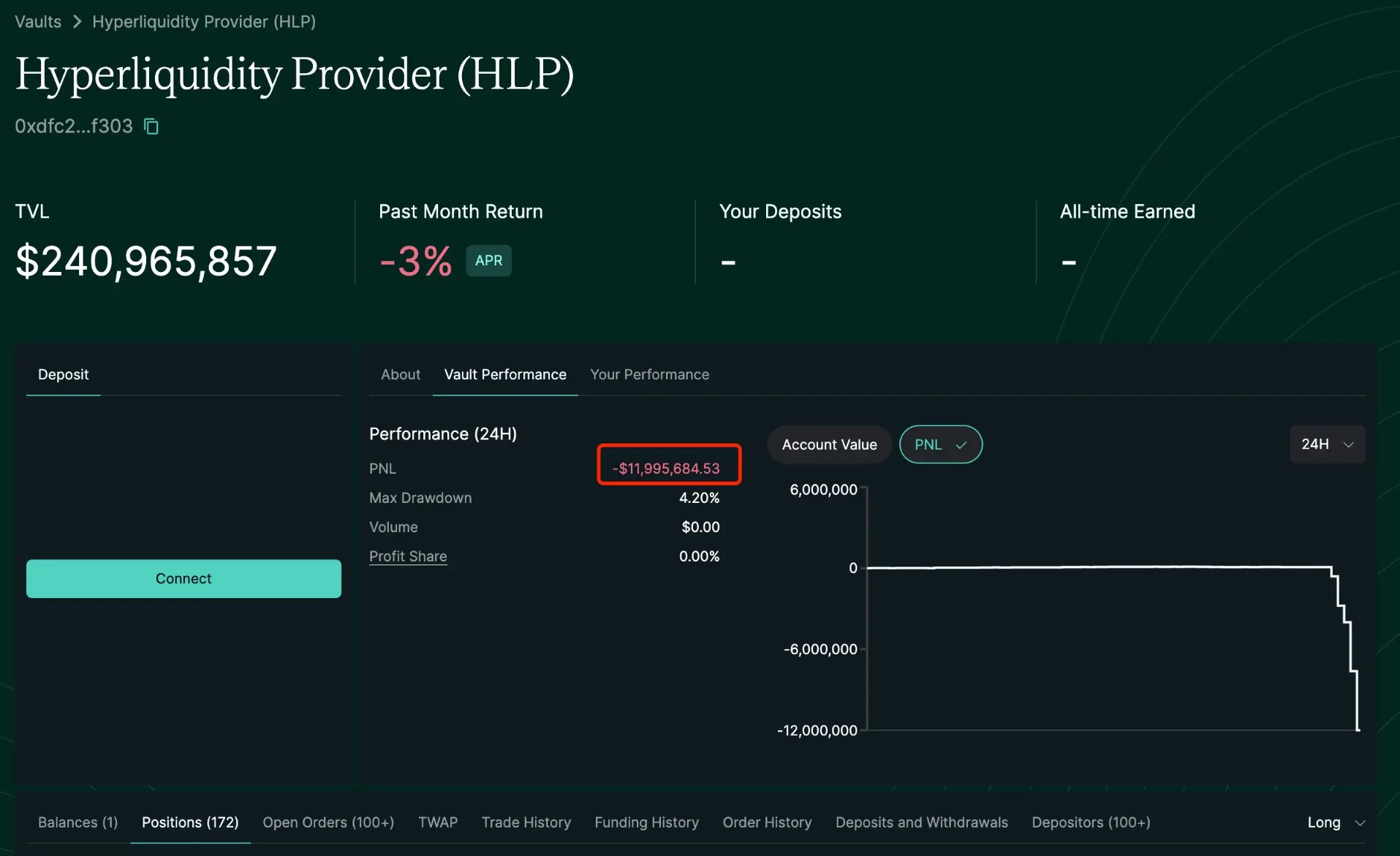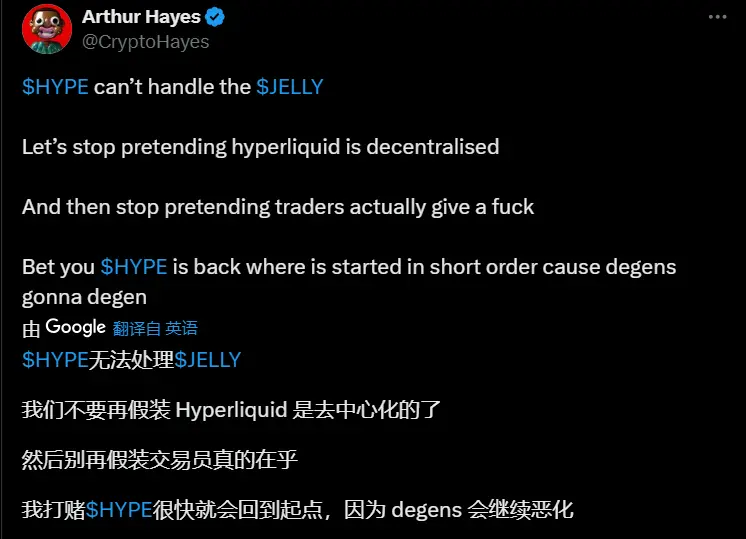The liquidation mechanism is attacked again, is the sign of HyperLiquid on the chain going to be smashed?

Reprinted from panewslab
03/27/2025·1MAuthor: Scof, ChainCatcher
Edited by: TB, ChainCatcher
After being attacked by the 50x leverage whale exploit last time, something happened to HyperLiquid.
The method is exactly the same, and the operation is open and transparent, but this time the target was replaced by a meme currency worth much less than ETH, which is much less liquid.
Although the platform adjusted the mechanism after the last time, judging from the results this time, the protection is still weak, and HyperLiquid finally paid for its negligence and arrogance.
Event sorting
Last night, the decentralized contract platform HyperLiquid encountered a carefully planned on-chain hunt. Focusing on the $JELLYJELLY token, some people have jointly hedged the platform's vault by issuing short orders, manipulating currency prices, and luring system liquidation, which has attracted widespread attention.
The incident was triggered by a huge short order: address 0xde9...f5c91 issued a short order worth $4.08 million at a price of $0.0095, investing US$3.5 million as margin, which is actually the "bait" to induce the system to take over.
Subsequently, another address Hc8gN...WRcwq smashed the market in the spot market, creating short floating profits. Short positions take the opportunity to withdraw most of the margin, resulting in the platform taking over the position automatically and the risk is transferred to the vault.
The trader then pulled the market backhand and bought a large amount of $JELLYJELLY to push up the price of the currency, causing huge losses to the short orders held by the system. At this time, retail investors began to withdraw their investment, the pressure on the vault doubled, and the liquidated price continued to move. As of the peak, the vault floating losses have exceeded US$10 million, and TVL has decreased by approximately US$20 million. At the same time, according to the analysis of encrypted KOL @ai_9684xtpa, if the currency price rises to $0.17, the vault may be forced to level and face losses of up to $240 million.
According to monitoring, the pull-out address once held 120 million $JELLYJELLY (about 5 million US dollars), making it the largest position on the chain. The funds at this address are suspected to be exhausted and the price of the currency began to fluctuate violently.

Community Response
Such a thrilling incident quickly sparked widespread discussion on Twitter.
Encrypto KOL @thecryptoskanda first speaks out, calling for "let Binance list $JELLYJELLY". Not long after, Binance co-founder He Yi forwarded the response and expressed his approval. A few minutes later, Binance officials conveniently announced the launch of the $JELLYJELLY perpetual contract tomorrow.
At the same time, HyperLiquid officially chose to "drag the network cable" and directly removed $JELLYJELLY. Before taking off the shelves, it made a profit of US$703,000. Although they said it was a vote by the committee, the move also sparked more controversy.
BitMEX founder Arthur Hayes immediately said: "HyperLiquid is no longer decentralized" and predicts that HYPE will continue to weaken and eventually return to the starting point.

Sonic Labs co-founder Andre Cronje also posted on the X platform to criticize HyperLiquid's leverage mechanism. He believes that the leverage multiple should not be a fixed function, but should be dynamically adjusted based on available liquidity and actual volatility. For example: a small position can give 1000 times of leverage, while a large position should be limited to 1.2 times. In DeFi, fixed leverage is an extremely dangerous design.
The detective on the chain ZachXBT spoke out even more angrily, criticizing HyperLiquid for its official price manipulation, and turning a blind eye to hackers opening positions on the platform and doing nothing.
After the incident, according to the official website of HyperLiquid, its HLP TVL dropped sharply to US$197 million in a short period of time. It is reported that HLP TVL had previously reached US$240 million.
For a time, the public opinion trend completely reversed, and Hyperliquid, who was once praised by believers as "Binance on Chain", was quickly losing market trust.
CEX in DEX leather?
Although the hunting incident ended with HyperLiquid pulling out $JELLYJELLY and the platform temporarily stopped bleeding, and the community also achieved "practical testing" of mechanism vulnerabilities in the short term, the questions behind it are far from answered.
For example, after the first mechanism was attacked, has the platform really evaluated the risk of imbalance between leverage and liquidity? This time, facing the liquidation crisis, why did you choose to stop losses by using a nearly centralized way of removing trading pairs instead of relying on the preset risk control mechanism?
From another perspective, if the platform claims to insist on decentralization, why can it "close the Internet" with one click at critical moments? If you choose "survival first", how much is the essential difference between HyperLiquid and CEX?
These unsolved questions point to a deeper dilemma: When a decentralized platform faces extreme market shocks, should it be made by the backend team?
As a user, I believe that on-chain transactions will eventually be the future, but there is still no answer to whether HyperLiquid can reach that point. Maybe it's a test subject, maybe it'll survive to become the new standard. But today, its decentralized narrative is already standing on the edge of a cliff.

